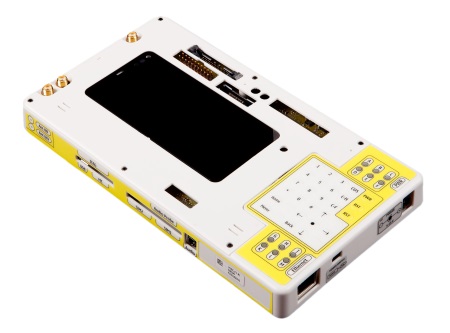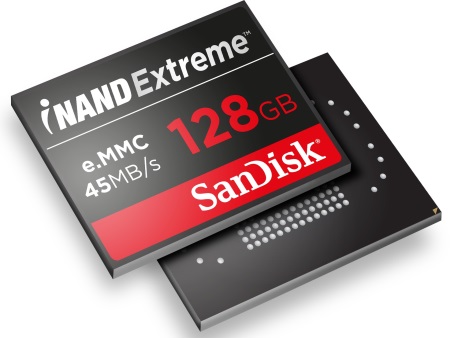The smart cell phone functionality has come a long way since Ericsson introduced the GS88 (some consider it the first) smartphone in 1997. The distinction between the first cell phones and one called a smartphone is murky, but one of the differences could be the capability to use third-part applications or apps. These smartphones are so popular that in 2013, for the first time, according to IDC Worldwide Quarterly Mobile Phone Tracker, more smartphones were sold (216 million of 419 million units sold globally in Q1 of 2013) than plain vanilla cell phones. Researchers fully expect this popularity to continue, but we wanted to know what technical trends for the near future we might expect engineers to develop for these marvels. To answer this we asked the experts at Renesas (microprocessors), SanDisk (embedded flash), and STMicroelectronics (sensors) what they see appearing in future smartphones.
David McTernan, VP of strategic marketing and communication for Renesas Mobile said that the company is very much focused on LTE-enabled smartphones since this category of handset requires significant processing capability to fulfil the promise of the always-connected, mobile-broadband-enabled, multimedia-oriented device. “This class of device will typically have an HD-resolution display supporting a wealth of rich experiences from high-quality video recording and playback to slick and smooth user interfaces possibly voice driven,” he observed.
McTernan said the wide range of applications, including enterprise level ones, coupled with the potential for data to be streamed at 150 Mbits/s over the air, drive the processing capability choices. Renesas sees a clear trend from existing handsets using dual-core ARM Cortex A9-based devices running around 1.2 GHz through quad-core A9 at up to 1.5 GHz that in turn are being superseded by quad-core ARM Cortex A7 devices. The driver for this trend is to optimize power consumption. At the high end, the trend is utilization of technologies like ARM big.LITTLE mixing dual or quad-A7 with dual, quad or other mixes of ARM Cortex A15’s for the ultimate performance/power trade-off in the current processor and process technology. The company also sees signs of a move toward even more compute power with a gradual introduction of 64-bit processing using a mix of ARM’s A57/A53 CPU cores again exploiting the benefits of big.LITTLE MP.
The challenge in mobile design, according to McTernan, is to balance power consumption against the continuing need for raw compute power. Carefully crafting a system, using hardware acceleration where appropriate, supports the flexibility of the multiple processor cores to drive the desired feature set, performance, and price point.

The Renesas MP5232 Development Board contains a dual-core ARM Cortex-A9 at 1.5 GHz, PowerVR SGX544 GPU, and a Cat-4 LTE/HSPA/2G triple-mode modem in a single chip for developing LTE solutions.
Rafael Feitelberg, Senior Director of Marketing at SanDisk, said the embedded storage needs for mobile devices have shifted dramatically from just a few years ago. Smartphones and tablets are increasingly becoming the heart of the smart digital lifestyle as more and more consumers turn to these devices to stay connected, do business, and enjoy music, games and other multimedia entertainment. To support a level of digital experience, mobile developers must use intelligent flash memory technology that not only offers the capacity to store digital content, but also meets even stricter high sequential and random performance requirements to ensure a strong user experience — enabling fast application launching, seamless multitasking and quick access to the cloud. Having fast, responsive flash memory technology is also allowing mobile developers to bring more significant multimedia and data intensive experiences to smartphones and tablets.
Creating better photography and video experiences with higher imaging and video resolution has become a key focus for mobile developers who realize that the smartphone has become the go-to device for capturing and sharing photos and videos. Today’s smartphones offer photography capabilities that were once only possible with a professional camera. The resolution of cameras in smartphones and tablets has quadrupled since 2007 from 3 to 12 Mpixels, with an expected 20 Mpixels in 2016, according to some predictions. Flash memory technology is pivotal to this advancement. Recent NAND flash memory innovations are enabling embedded storage devices, such as the SanDisk iNAND EFDs, to provide responsive and high-capacity storage in an incredibly compact form factor. This in turn is allowing developers more room to play around with, and to include advanced cameras and other devices. In addition, higher-performance flash is enabling user experiences such as rapid multishot, storage of HD videos and imaging, as well as fast content streaming from storage to cloud. However, we’ve only scratched the surface of smartphone photography, and these experiences promise to get better as developers look to introduce slow motion, 3D photography, and other next-generation technologies.

The iNAND embedded flash device provides high capacity storage in a small form factor to support memory-hungry applications in mobile devices.
Jay Esfandyari, MEMS Product Marketing Manager at STMicroelectronics, says the company expects to see two major technology trends in sensors for cell phones, cameras, and portable personal devices. First is the acceleration and augmentation of everyday computing from the desktop to portable devices. These augmented applications are being made possible by a variety of sensors, sensor hubs, and sensor software suites. The inertial sensor hub, for example, is comprised of accelerometer, gyro, and compass and is providing indoor and outdoor positioning capabilities. As another example, the acoustic hub, with ultrasonic gesture recognition, voice processing and microphone array, dramatically enhances the user experience by enabling natural and intuitive voice and motion recognition. Environmental sensors are also becoming a part of the personal-device landscape, providing the ability to monitor and utilize temperature, air pressure, and humidity to further enhance the user’s understanding of their environment.
The second trend is the proliferation and ubiquity of sensors in their role as the “senses” of the “Internet of Things.” Our entire environment is becoming smarter. With the combination of sensors and cloud-based computing, a hotel room knows when a guest has arrived and instantly parts the curtains, turns on the lights, and sets the temperature. With sensors, our phone becomes the control center of our homes, our cars, and our offices. Shopping experiences become tailored to our individual preferences as our phones interact on the street or in the mall with sensors in boutiques and stores, our fitness programs tailored to produce our optimal health benefits depending on daily needs and activities, and our safety more assured by dependable contextually-aware sensors in our homes.

The LPS331AP pressure sensor is used to indicate altitude for mobile devices
Advertisement
Learn more about Electronic Products Magazine





